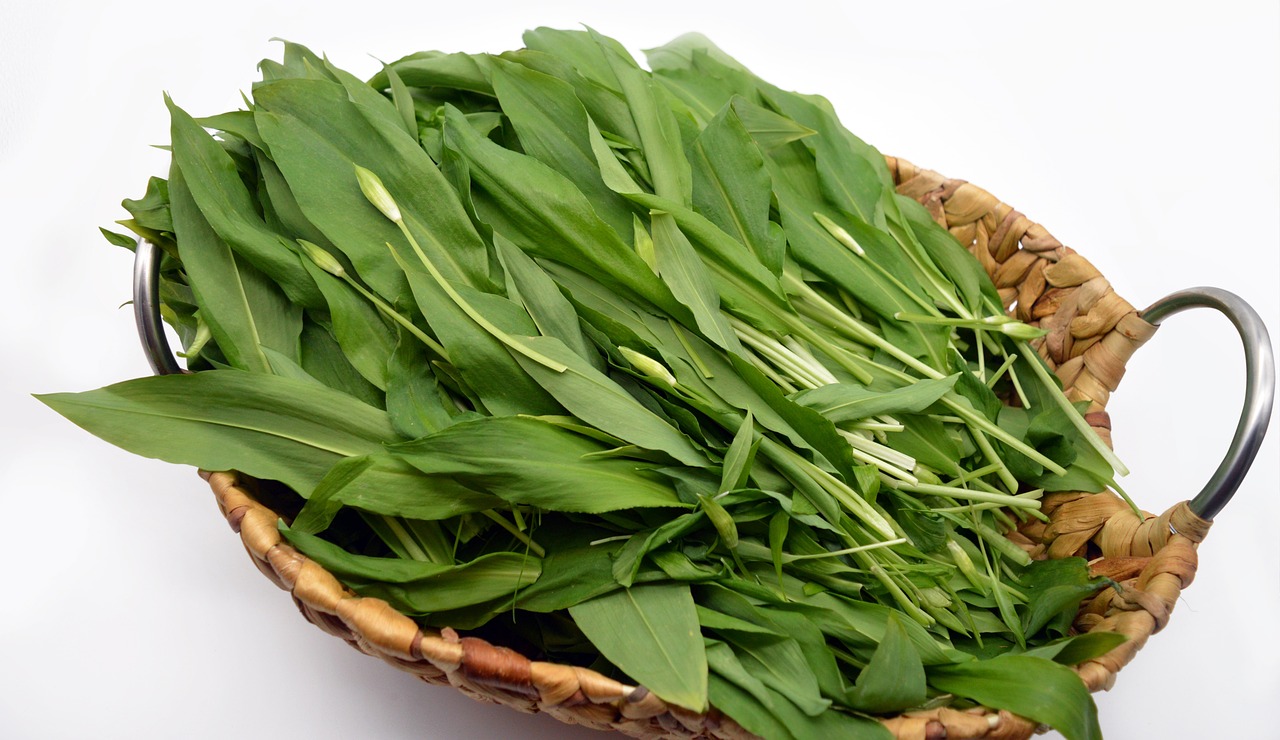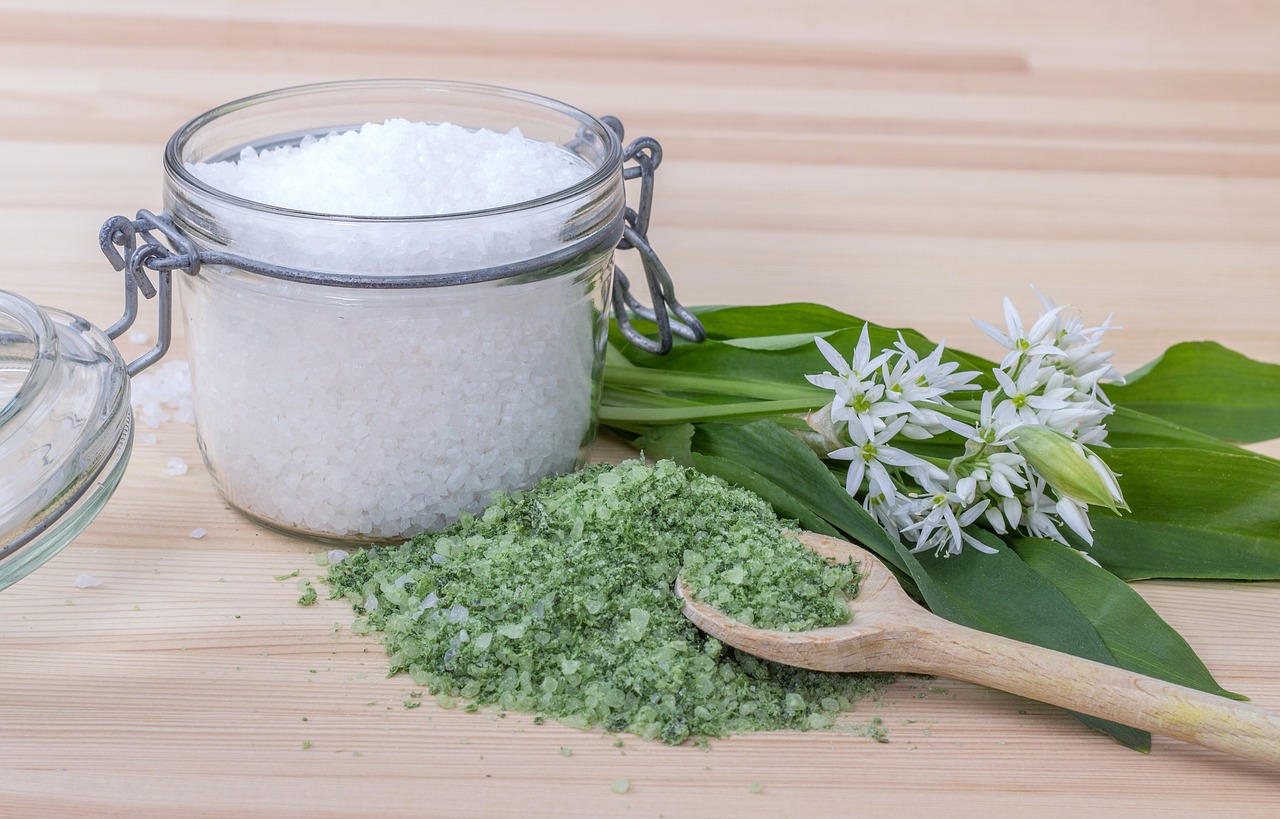Wild garlic, also known as ramsons, buckrams, bear’s garlic, and wild leek, is a perennial herb that grows in woodlands and shady areas in Europe and North America. This plant is known for its delicious and pungent aroma, which makes it a popular ingredient in many dishes. One of the best ways to preserve the flavor of wild garlic is by making wild garlic salt. The process is easy, and the resulting seasoning can be used in a variety of ways.
Wild garlic is a good source of vitamin C, vitamin A, iron, and manganese.
History of Wild Garlic Salt
Wild garlic has been used for thousands of years as a medicinal herb and culinary ingredient. It was highly regarded by the ancient Greeks and Romans, who believed that it had many health benefits. In medieval times, wild garlic was considered a powerful herb that could ward off evil spirits and protect against the plague.
Using wild garlic to make salt is a relatively new idea, but it has quickly become popular among foodies and chefs around the world. The process involves simply blending together wild garlic leaves and coarse sea salt to create a flavorful seasoning that can be used in a wide range of dishes.
How to Identify Wild Garlic

Wild garlic is a perennial plant that grows in damp woodland areas, often near water sources like rivers and streams. It’s important to correctly identify wild garlic, as some poisonous plants can look similar. Here are some tips to distinguish wild garlic from its poisonous lookalikes:
1. Smell: Wild garlic leaves have a strong garlic smell when crushed, while the leaves of poisonous plants do not have any smell or may have an unpleasant smell.
2. Appearance: Wild garlic leaves are long, narrow and pointed, while the leaves of poisonous plants may be broader or more oval-shaped.
3. Color: Wild garlic leaves are typically bright green, while some poisonous plants may have purple, red or brownish hues.
4. Habitat: Wild garlic tends to grow in woodland areas or shady spots, while some poisonous plants prefer open fields or sunny locations.
It’s always best to err on the side of caution and avoid consuming wild plants unless you are certain of their identity. If in doubt, consult a field guide or local expert for help identifying wild garlic and other edible plants.
Wild garlic is a popular ingredient in European cuisine, especially in Germany, where it's used to make a traditional soup called Bärlauchsuppe.
Wild Garlic Salt
Ingredients:
- 2 cups wild garlic leaves
- 1 cup coarse sea salt
Directions:
1. Rinse the wild garlic leaves thoroughly, then pat them dry with a paper towel.
2. Place the wild garlic leaves and coarse sea salt in a food processor or blender.
3. Pulse until the mixture is well combined and the wild garlic is finely chopped.
4. Spread the mixture out on a baking sheet and leave it to dry in a warm, dry place for 24-48 hours.
5. Once the mixture is completely dry, store it in an airtight container.
Shelf Life and Storage of Wild Garlic Salt
Wild garlic salt can be stored in an airtight container for up to six months. It’s important to keep the seasoning in a cool, dry place away from light and moisture. If the salt starts to clump together, simply break it up with a fork before using.
Uses for Wild Garlic Salt
Wild garlic salt can be used in a wide range of dishes, from soups and stews to marinades and rubs. Here are some ideas for using this versatile seasoning:
– Sprinkle it over roasted or grilled vegetables.
– Use it to add flavor to homemade bread or pizza dough.
– Mix it into mashed potatoes or scrambled eggs.
– Rub it onto chicken or fish before grilling or baking.
– Add it to homemade salad dressings or dips.
Making wild garlic salt is an easy and delicious way to preserve the flavor of this fragrant herb. This seasoning can be used in a variety of dishes and adds a delicate garlic flavor to any dish. With a shelf life of up to six months, wild garlic salt is a convenient and versatile seasoning to have on hand in the kitchen. Give this recipe a try and see how it can take your favorite dishes to the next level.
The Author:
Pioneerthinking.com – Ingredients for a Simple Life.
Photo. Finja M, Frauke Riether
